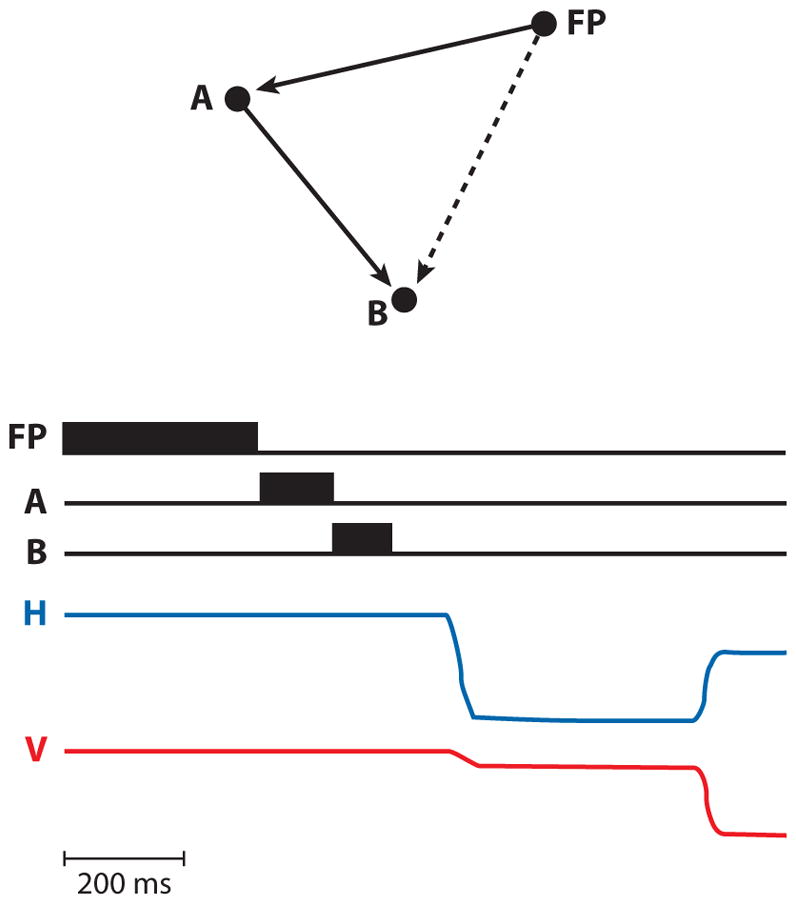Figure 1.

The double-step saccade task. (Top) The spatial locations of the fixation point (FP) and the two saccade targets (A and B). The solid arrows show the vectors of the two saccades, and the dashed arrow shows the vector from the fixation point to the retinal location of the B target. (Bottom) Appearance in time of FP, A, and B, and the horizontal (H) and vertical (V) eye movements of a normal human. Note that the targets were extinguished before any eye movements took place. This created a dissonance between the retinal coordinates of the stimulus at B and motor coordinates of the saccade to it. B was flashed in the left visual field but had to be acquired with a rightward eye movement. Figure adapted from Duhamel et al. (1992b) with permission.
